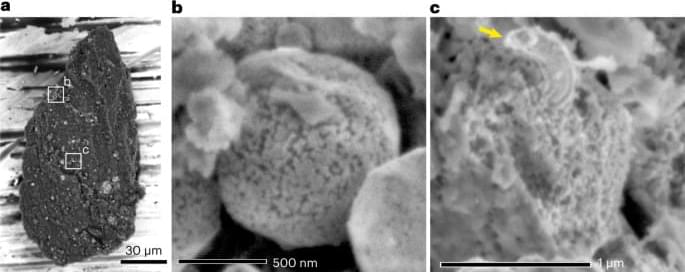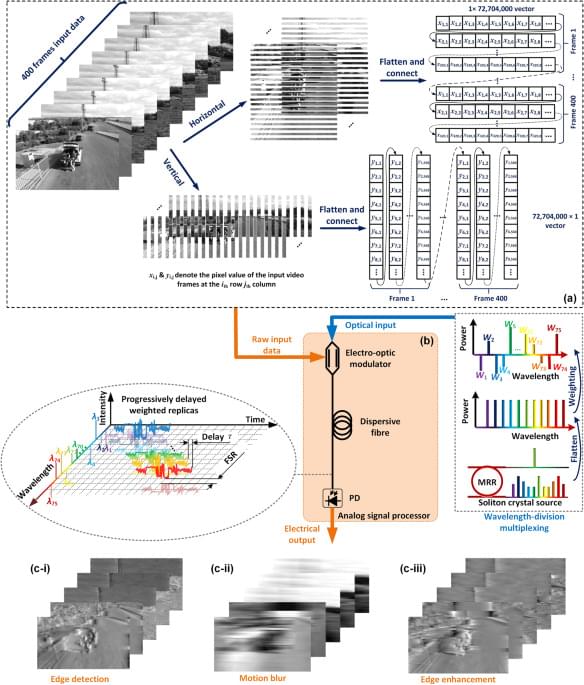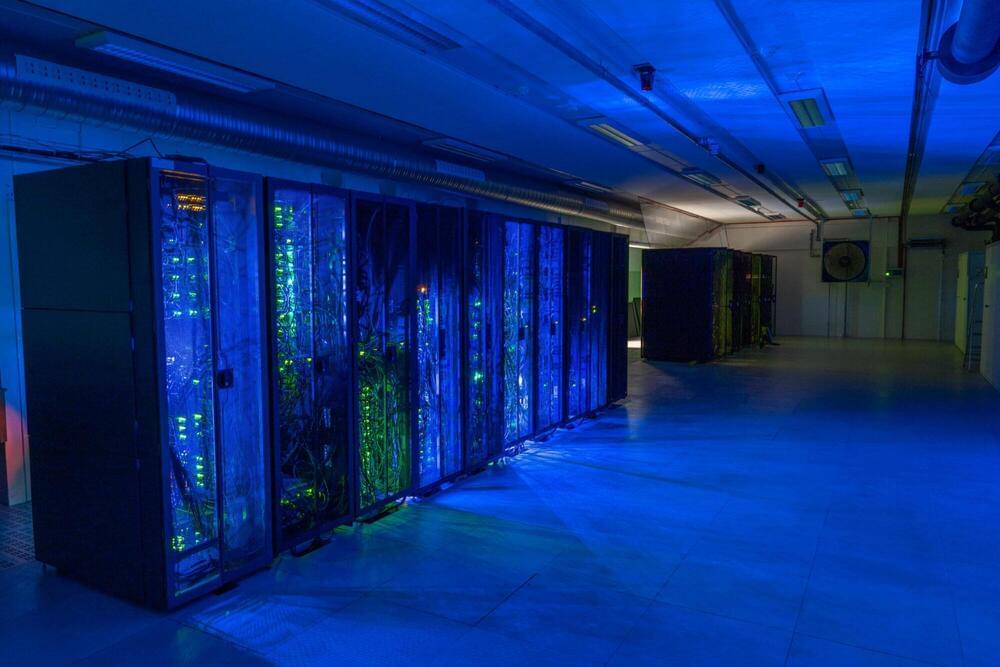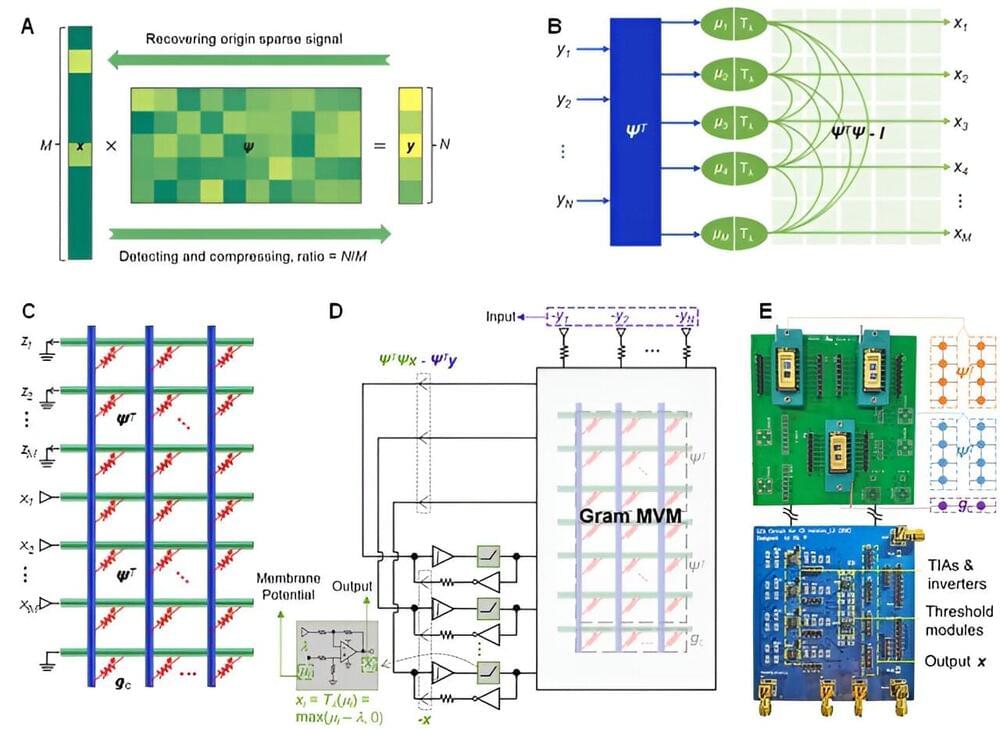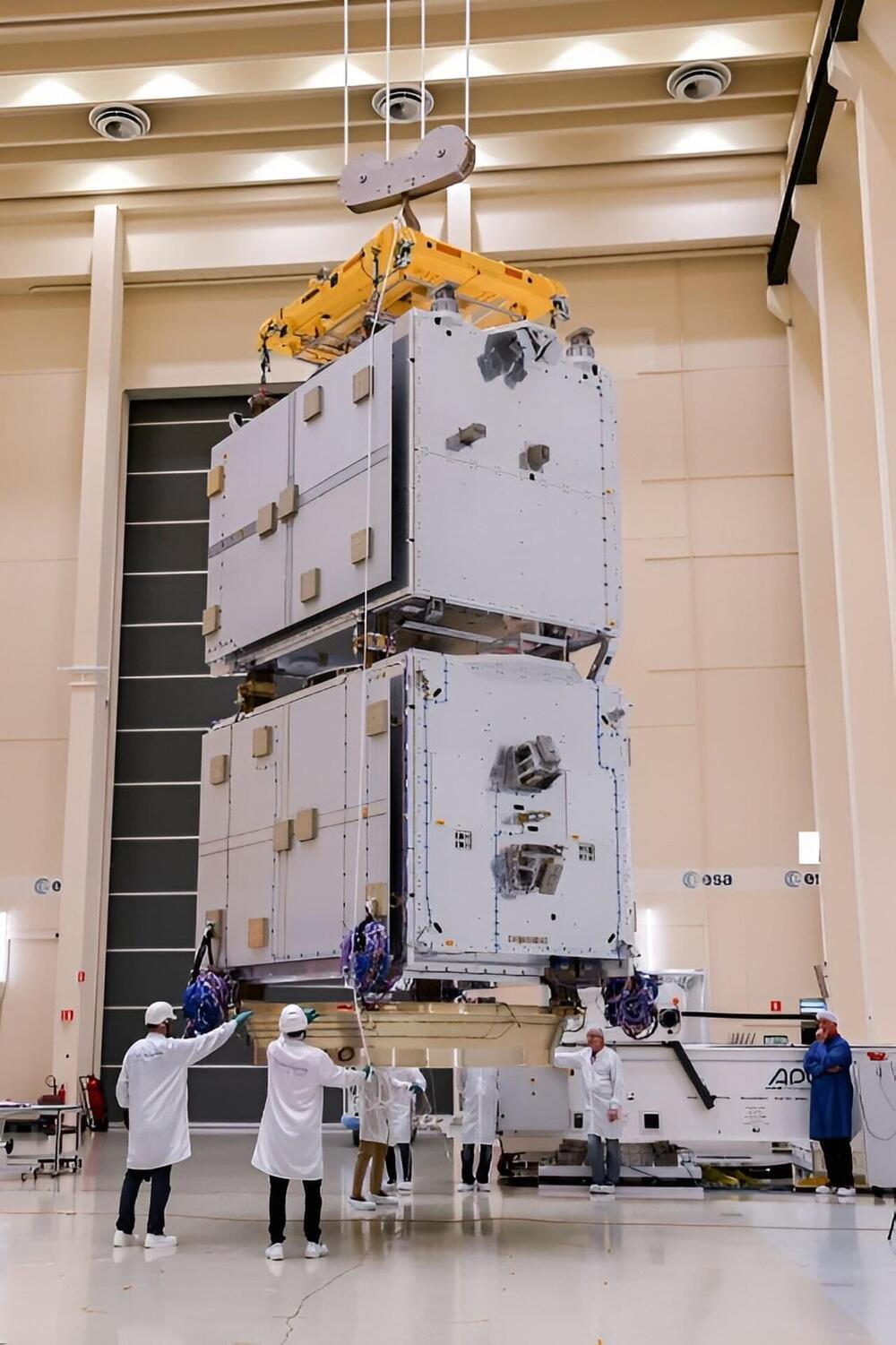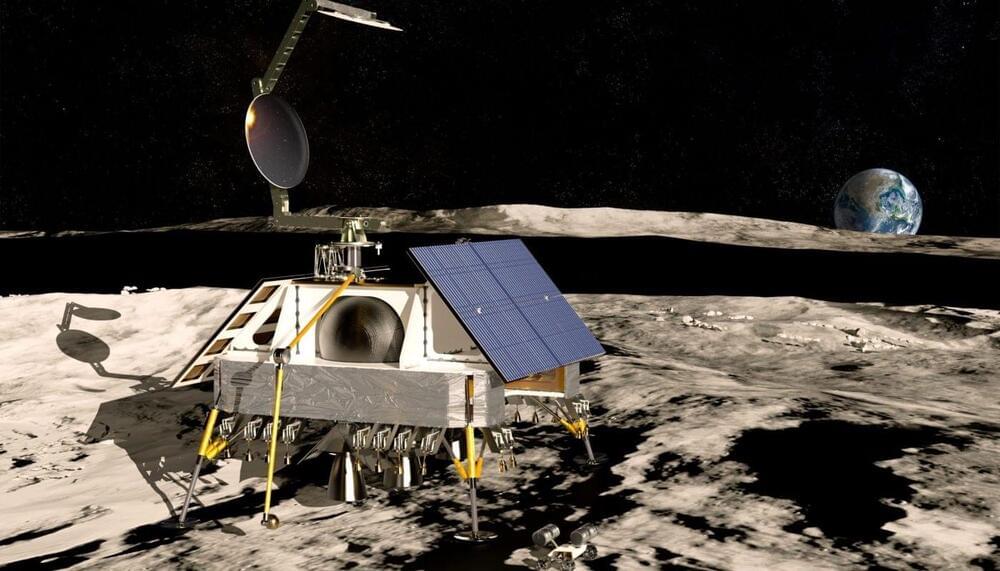Page 853
Dec 21, 2023
Influx of nitrogen-rich material from the outer Solar System indicated by iron nitride in Ryugu samples
Posted by Saúl Morales Rodriguéz in categories: particle physics, space
Iron nitride (Fe4N) is detected on magnetite particles within the Ryugu sample returned by Hayabusa2. It is probably the product of impacts of nitrogen-rich dust from the outer Solar System on the surface of Ryugu, indicative of a flux of N-rich dust in the inner Solar System.
Dec 21, 2023
Photonic signal processor based on a Kerr microcomb for real-time video image processing
Posted by Saúl Morales Rodriguéz in categories: biotech/medical, information science, robotics/AI
Signal processing is key to communications and video image processing for astronomy, medical diagnosis, autonomous driving, big data and AI. Menxi Tan and colleagues report a photonic processor operating at 17Tb/s for ultrafast robotic vision and machine learning.
Dec 21, 2023
New, super-smart hardware could provide drastic cuts in power consumption
Posted by Saúl Morales Rodriguéz in category: computing
Greener data processing requires systems that work smarter, faster, and are more energy efficient. Researchers from the Norwegian University of Science and Technology (NTNU) have developed a tiny piece of super-smart hardware that enables all of the above.
Anyone who knows anything about running computer programs knows that they take time, and everyone wants the program they are running to work as quickly as possible.
A new, tiny piece of hardware designed by computer scientists can be integrated into processors, which are the computer’s brains, making it easier for developers to write programs that run faster and more efficiently.
Dec 21, 2023
Research team develops analog hardware solution for real-time compressed sensing recovery in one step
Posted by Saúl Morales Rodriguéz in categories: biotech/medical, computing
A research team led by Prof. Sun Zhong at Peking University has reported an analog hardware solution for real-time compressed sensing recovery. It has been published as an article titled, “In-memory analog solution of compressed sensing recovery in one step” in Science Advances.
In this work, a design based on a resistive memory (also known as memristor) array for performing instantaneous matrix-matrix-vector multiplication (MMVM) is introduced. Based on this module, an analog matrix computing circuit that solves compressed sensing (CS) recovery in one step (within a few microseconds) is disclosed.
CS has been the cornerstone of modern signal and image processing, across many important fields such as medical imaging, wireless communications, object tracking, and single-pixel cameras. In CS, sparse signals can be highly undersampled in the front-end sensor, which breaks through the Nyquist rate and thus significantly improving sampling efficiency.
Dec 21, 2023
IBM debuts next-gen quantum processor and IBM quantum system two, extends roadmap to advance quantum utility
Posted by Saúl Morales Rodriguéz in categories: quantum physics, supercomputing
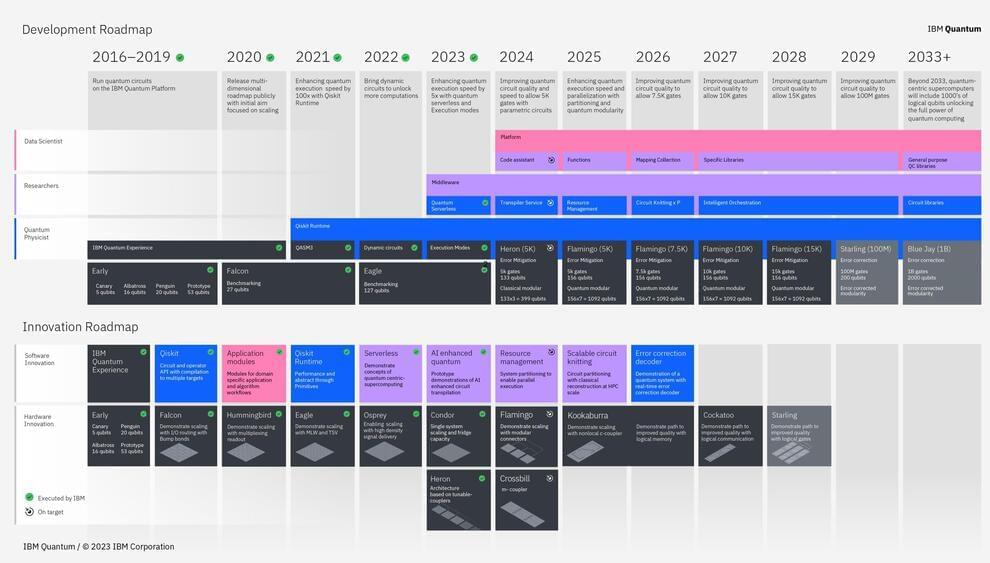
At the annual IBM Quantum Summit in New York, IBM debuted IBM Quantum Heron, the first in a new series of utility-scale quantum processors with an architecture engineered over the past four years to deliver IBM’s highest performance metrics and lowest error rates of any IBM Quantum processor to date.
IBM also unveiled IBM Quantum System Two, the company’s first modular quantum computer and cornerstone of IBM’s quantum-centric supercomputing architecture. The first IBM Quantum System Two, located in Yorktown Heights, New York, has begun operations with three IBM Heron processors and supporting control electronics.
Dec 21, 2023
Galileo Second Generation satellite aces first hardware tests
Posted by Saúl Morales Rodriguéz in category: satellites
The new Galileo satellite model from Thales Alenia Space underwent mechanical and signal performance testing this summer at ESA’s ESTEC Test Center. Structural models resisted launch-like noise and vibrations while an electrical model proved its ability to send Galileo signals—a major milestone in the development of Galileo’s Second Generation.
Europe’s Galileo is the world’s most precise satellite navigation system, providing meter-level accuracy to more than 4 billion users worldwide. It currently comprises 28 satellites in orbit and 10 more are due to be launched, after which a new generation of satellites, the Galileo Second Generation or G2, will revolutionize the fleet with enhanced capabilities.
“G2 satellites will be much larger than those of the First Generation, use electric propulsion, host a more powerful navigation antenna, carry more and even better atomic clocks on board and have fully digital payloads,” explains ESA’s Galileo Second Generation Project Manager Miguel Manteiga Bautista. “The modular architecture will offer a high degree of flexibility to accommodate more equipment and inter-satellite links will be enabled,” he adds.
Dec 21, 2023
Utility-Scale Quantum Program Advances Toward Prototyping
Posted by Saúl Morales Rodriguéz in categories: computing, government, quantum physics
DARPA’s Underexplored Systems for Utility-Scale Quantum Computing (US2QC) program seeks to determine whether an underexplored approach to quantum computing can achieve utility-scale operation — meaning its computational value exceeds its cost — faster than conventional predictions.
In the initial phase, each company presented a design concept describing their plans to create a utility-scale quantum computer. In the follow-on phase, selected performers aim to take their concepts to the next level. Now, US2QC’s key goal centers on developing and defending a system design for a fault-tolerant prototype, a smaller-scale quantum computer demonstrating that a utility-scale quantum computer can be constructed as designed and operated as intended.
This prototype system design will identify all required components and sub-systems and establish their minimum performance requirements. A DARPA-led government test and evaluation team consisting of technical experts will evaluate design viability.
Dec 21, 2023
DARPA picks 14 companies for lunar architecture study
Posted by Saúl Morales Rodriguéz in categories: economics, space
WASHINGTON — DARPA has selected 14 companies, ranging from small startups to established aerospace corporations, to participate in a study on developing commercial lunar infrastructure.
DARPA announced Dec. 5 that 14 companies will collaborate over the next seven months on its 10-Year Lunar Architecture, or LunA-10, study. The goal of the effort, announced in August, is to develop an integrated architecture to support a commercial lunar economy by the mid-2030s.
“LunA-10 has the potential to upend how the civil space community thinks about spurring widespread commercial activity on and around the Moon within the next 10 years,” Michael Nayak, DARPA program manager for LunA-10, said in a statement.
Dec 21, 2023
L3Harris gets green light to produce 16 space-based hypersonic missile trackers
Posted by Saúl Morales Rodriguéz in categories: military, satellites
WASHINGTON — Defense contractor L3Harris announced Dec. 20 it has received approval from the Space Development Agency to move into production on 16 satellites designed to detect and monitor hypersonic missiles aimed at the U.S. or its allies.
L3Harris said its satellites cleared a critical design review and a production readiness review.
The Space Development Agency (SDA) is a U.S. Space Force organization building a layered network of satellites known as the Proliferated Warfighter Space Architecture. It includes a Transport Layer of interconnected communications satellites that will transmit data collected by the Tracking Layer of sensor satellites.

